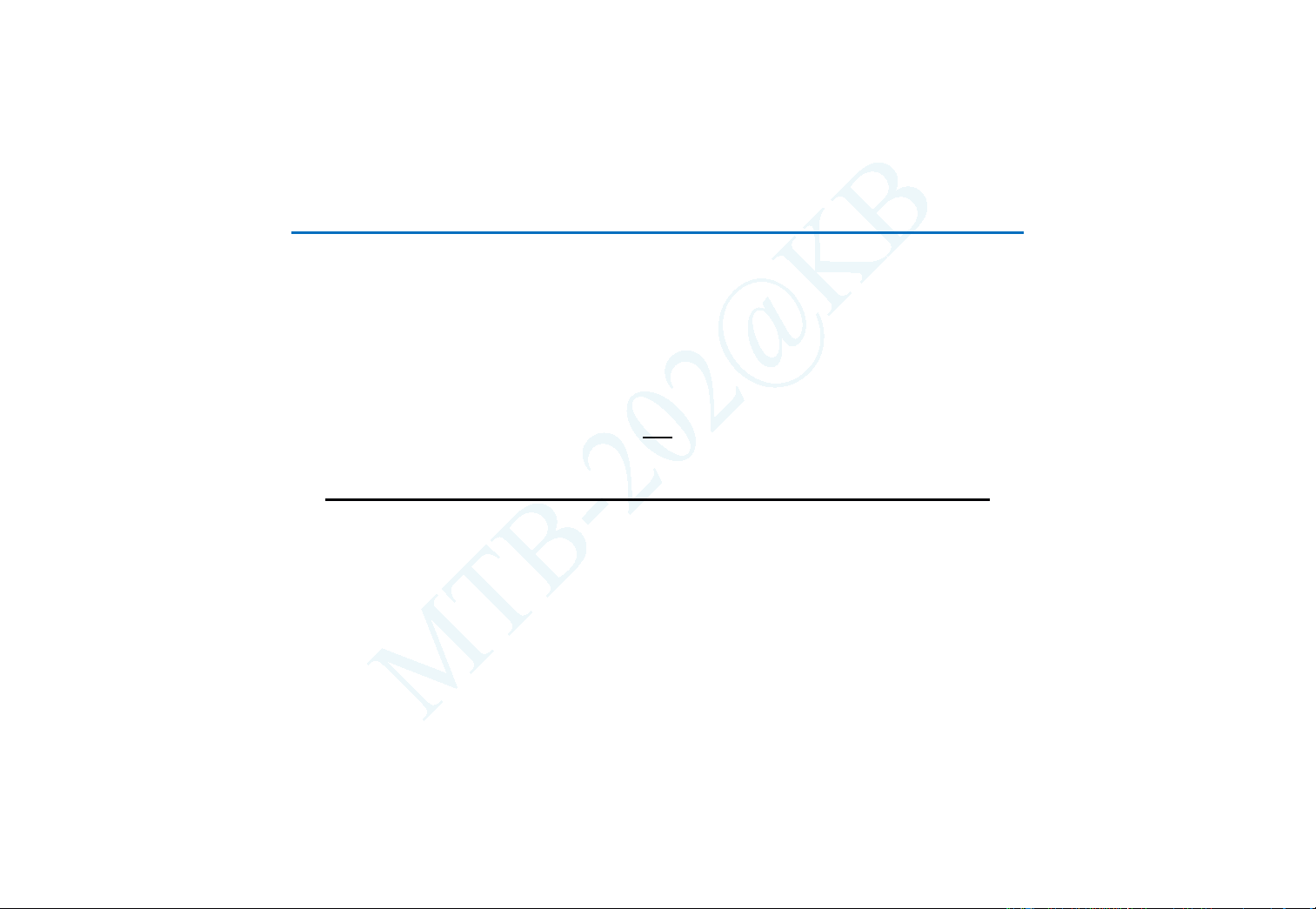
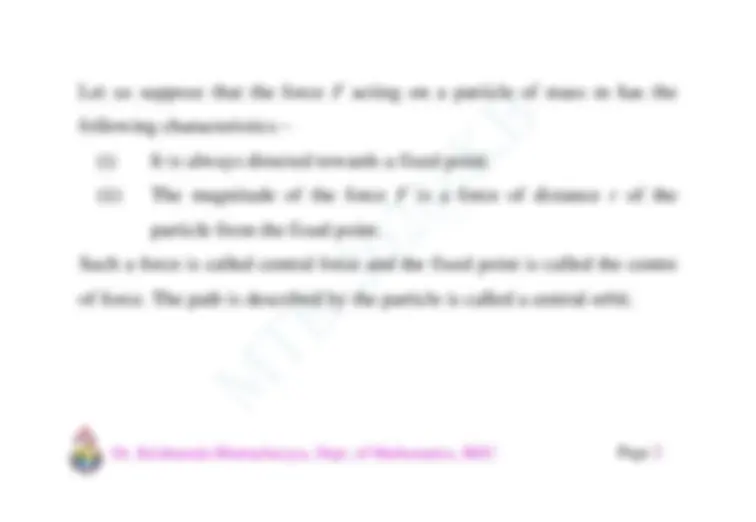
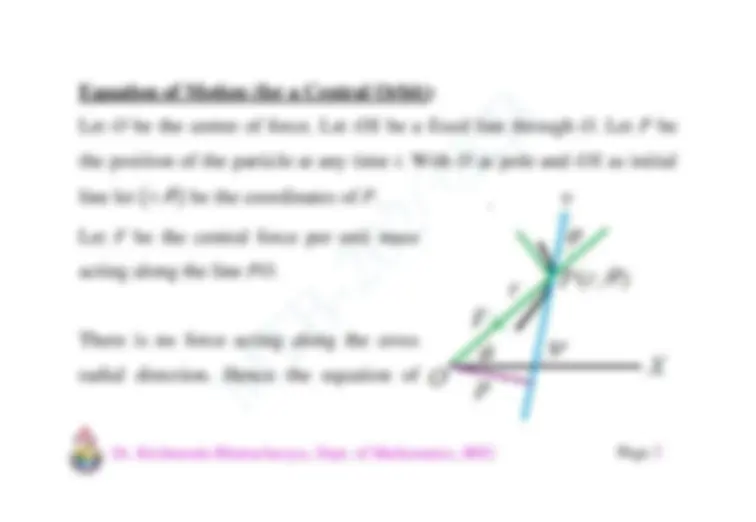
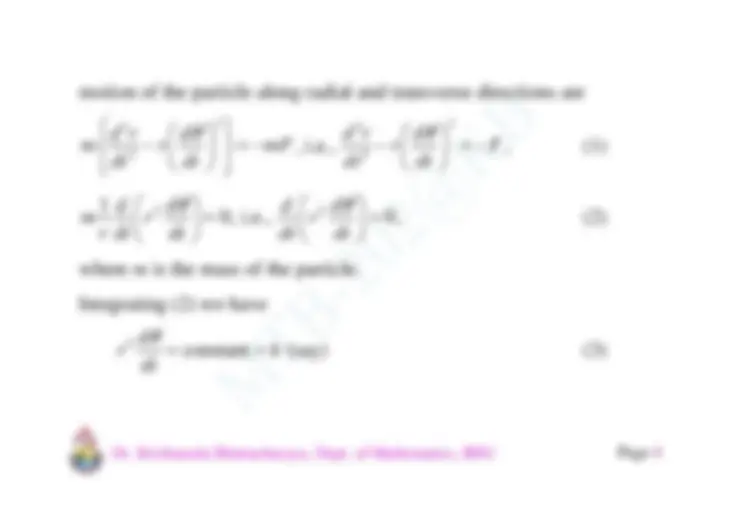
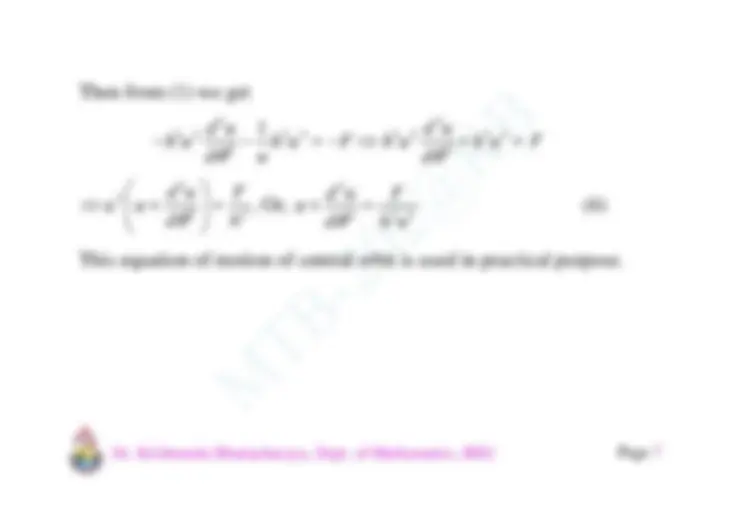
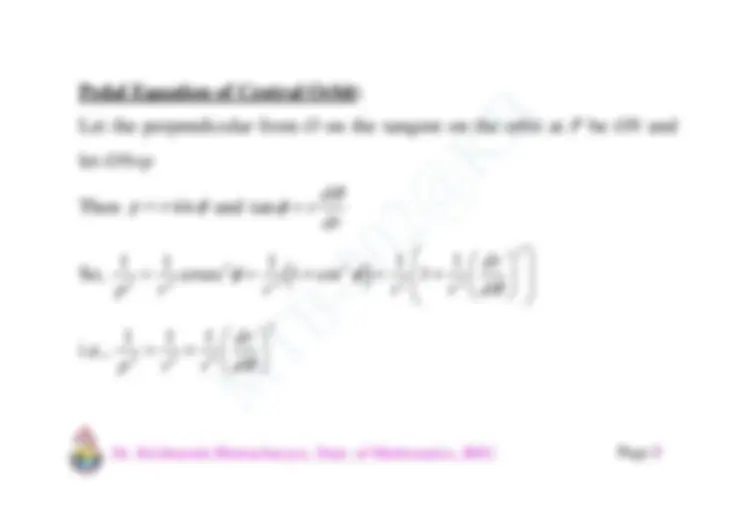
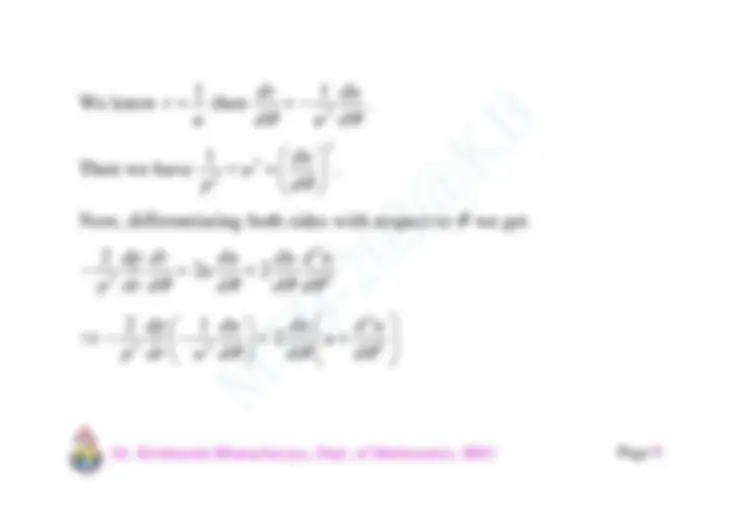
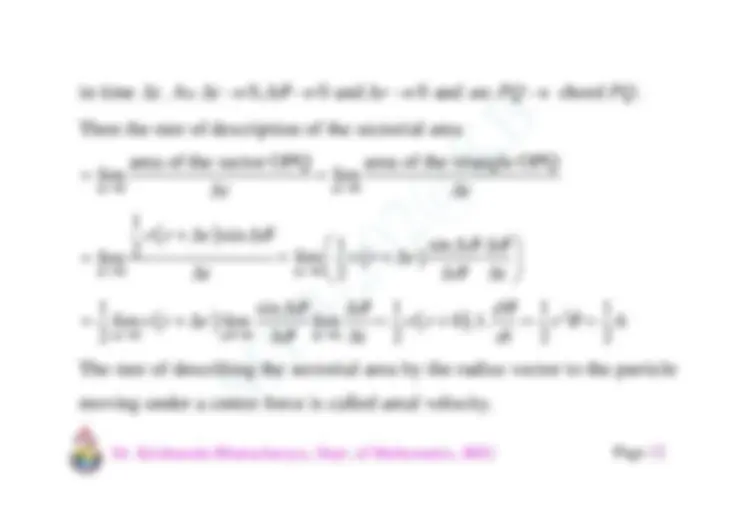
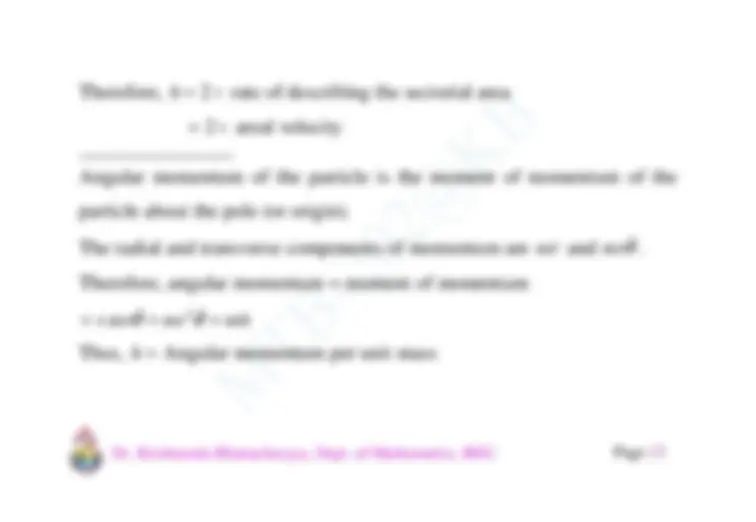
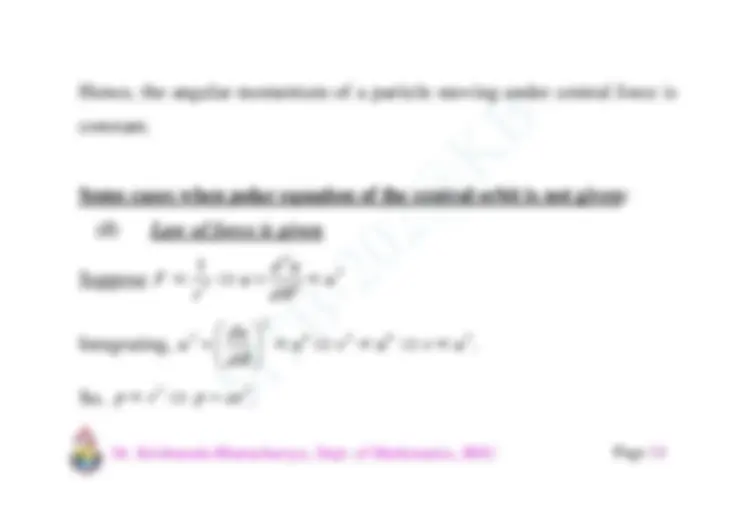
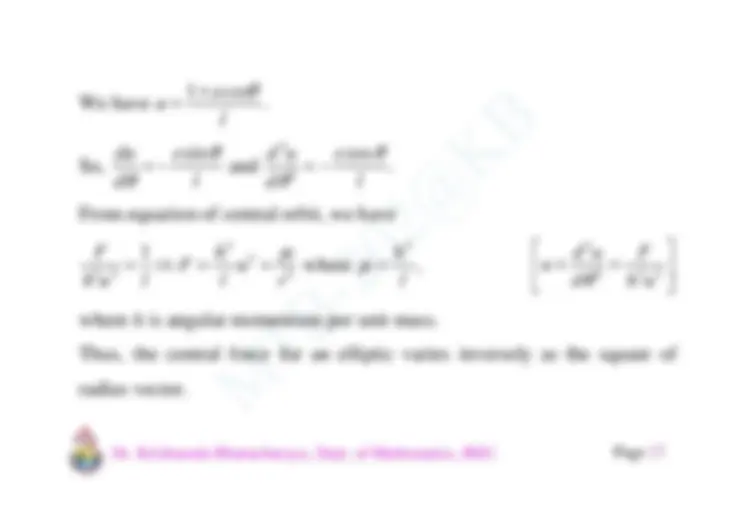
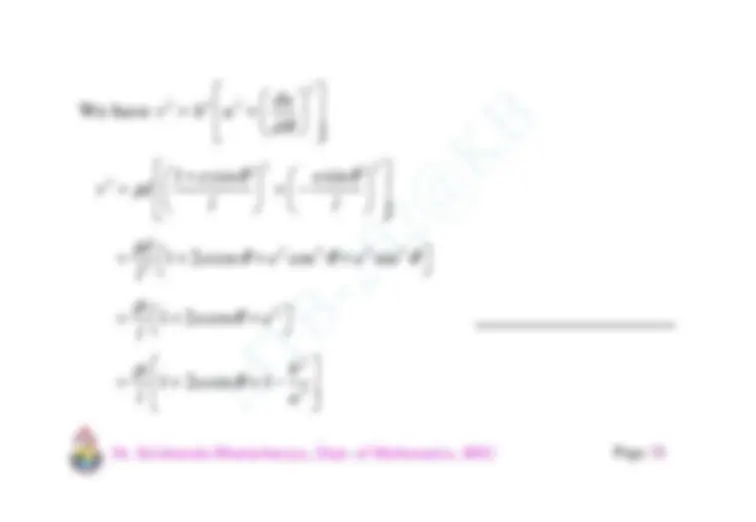
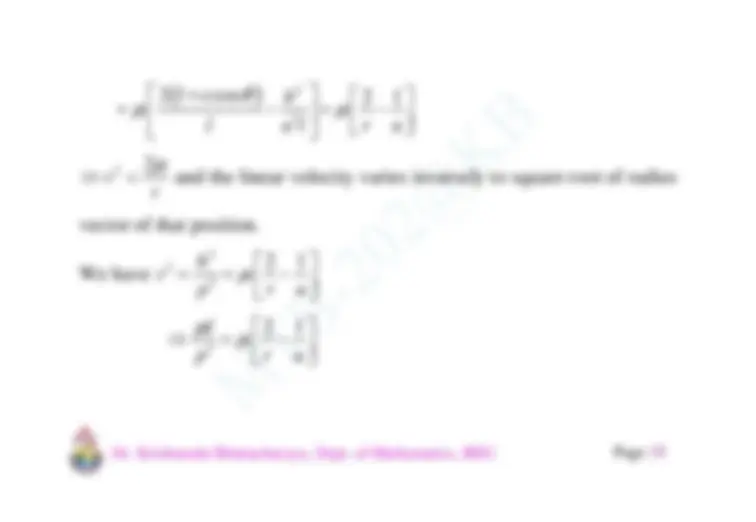
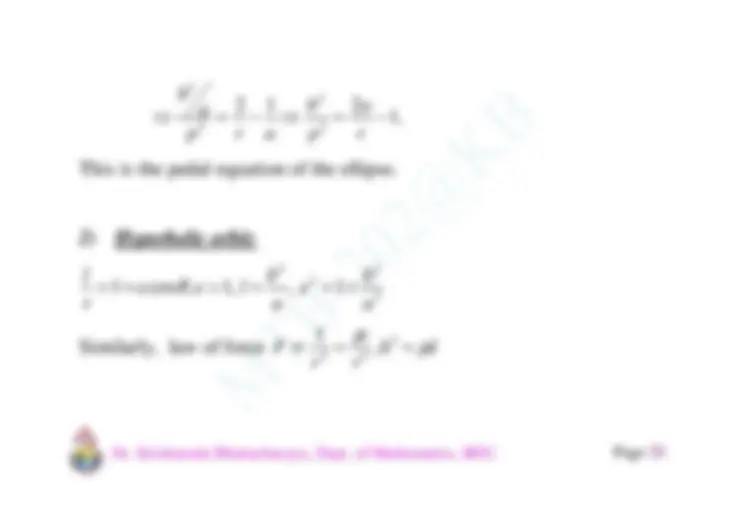
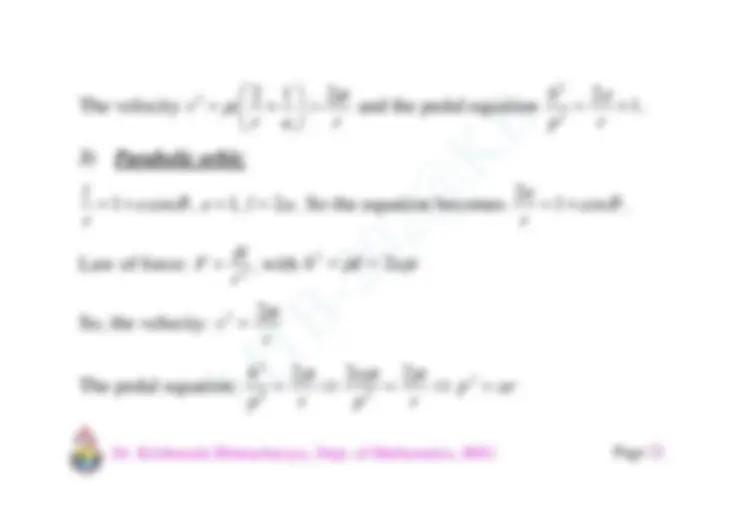
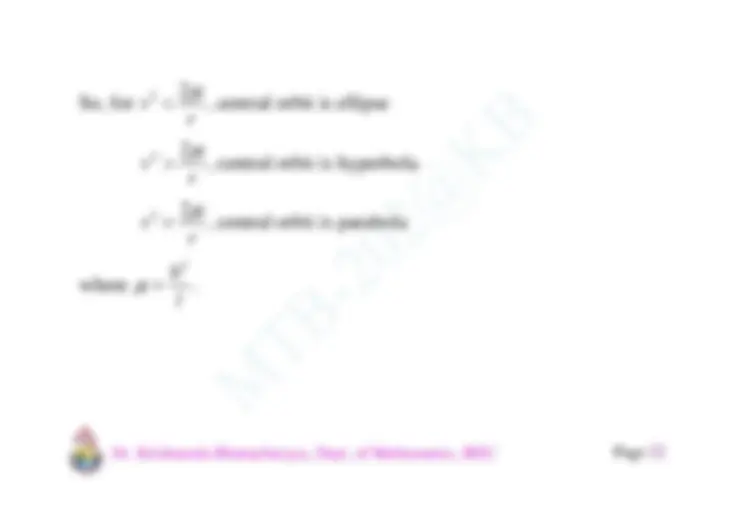
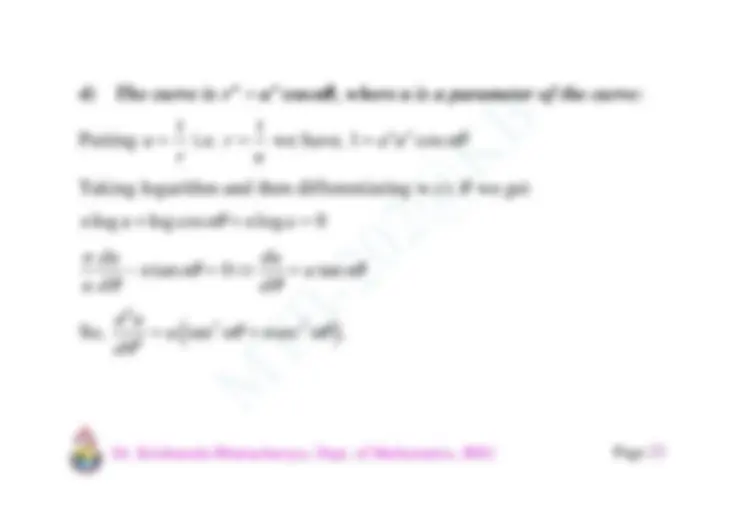
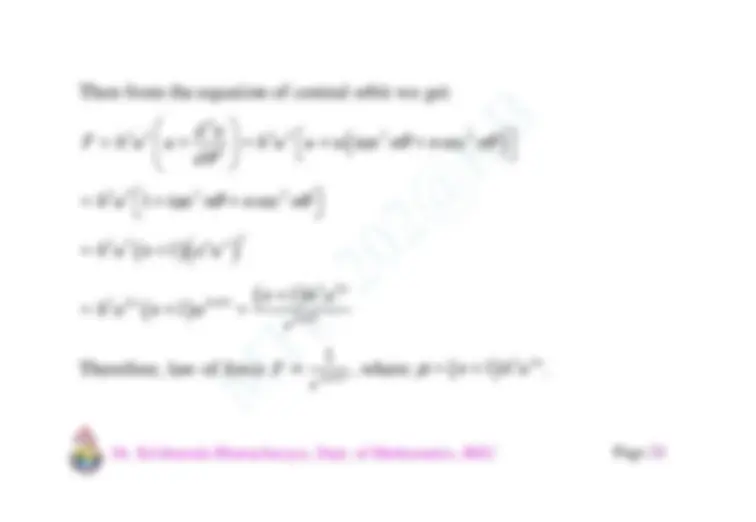
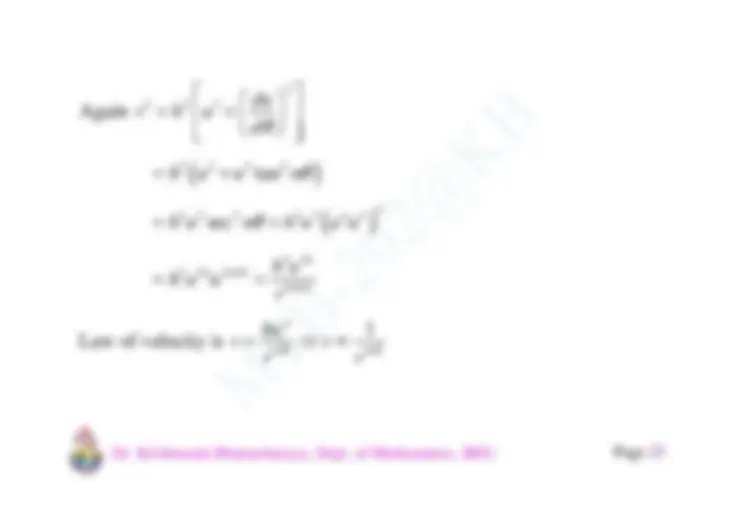
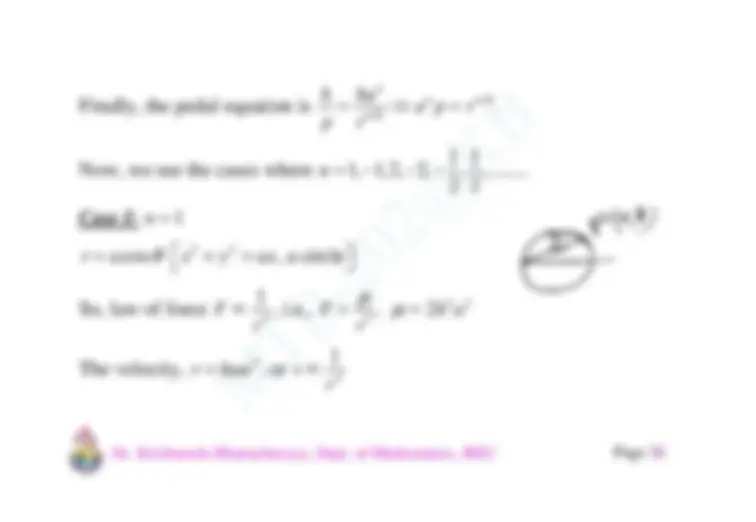
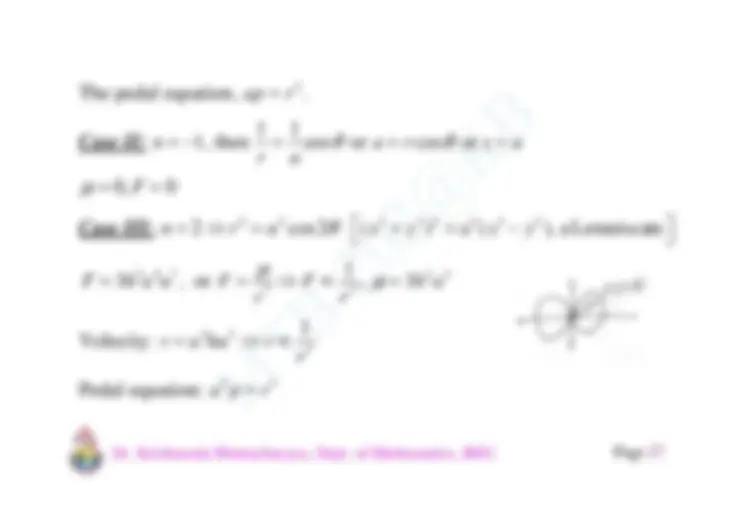
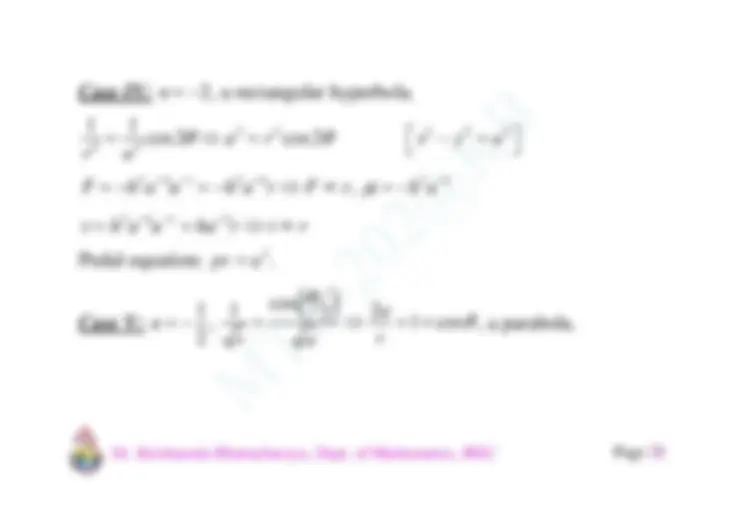
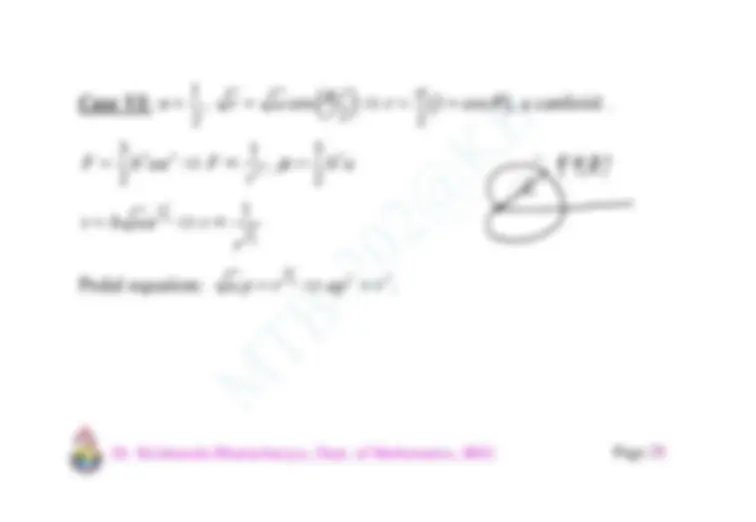
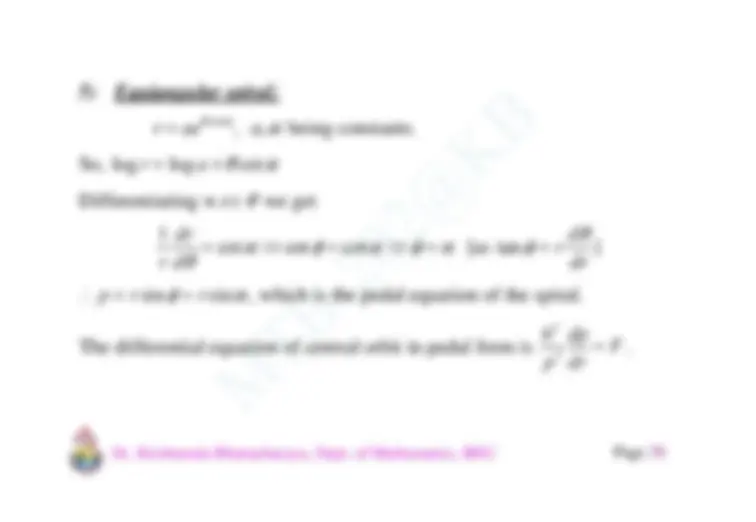
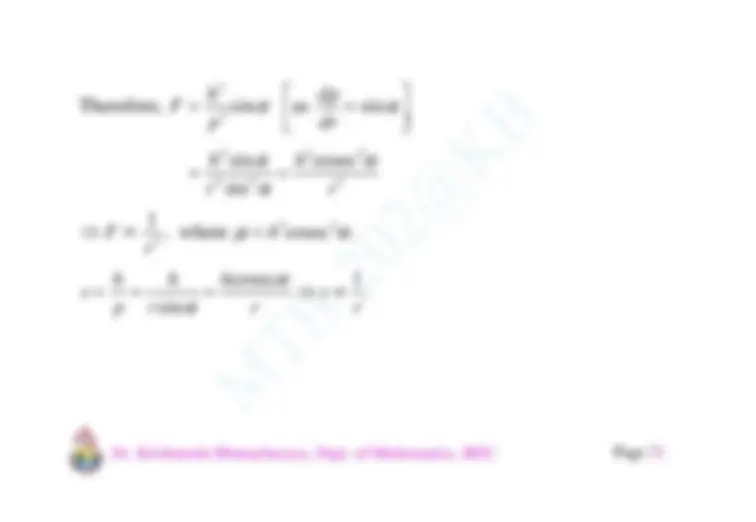

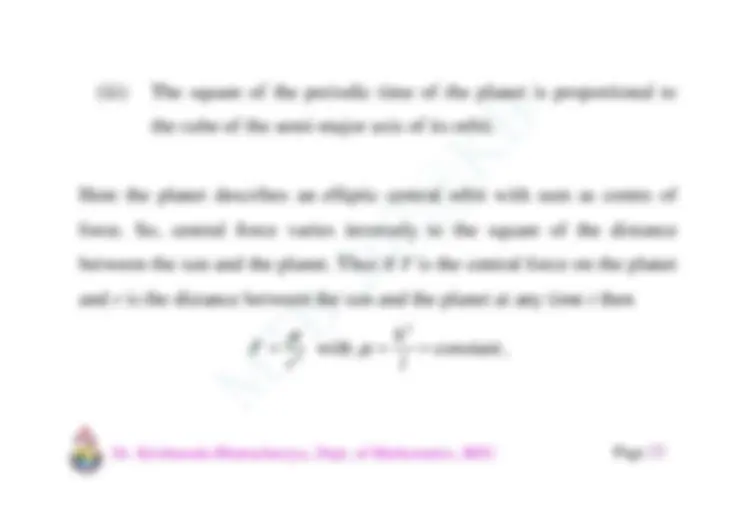
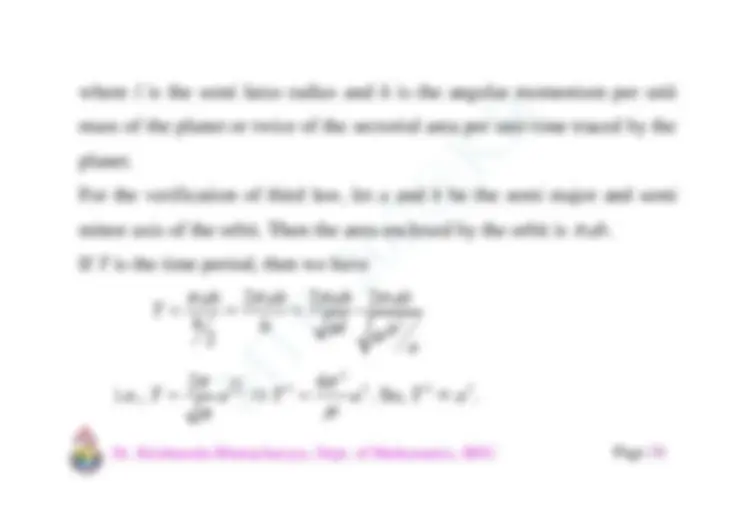
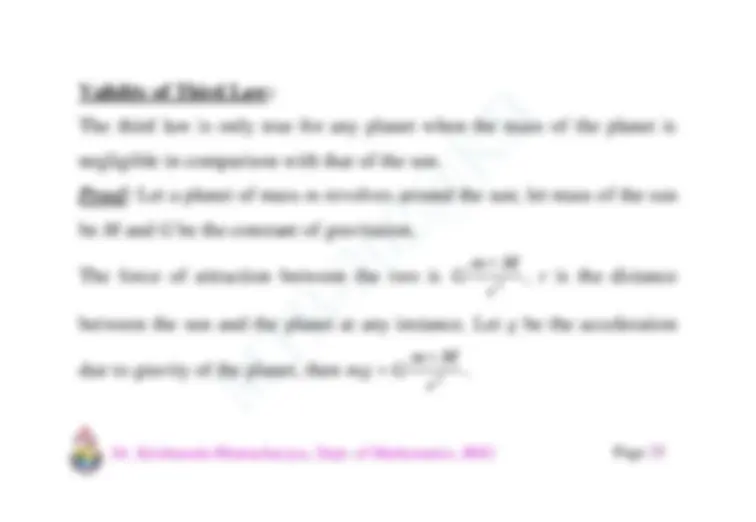
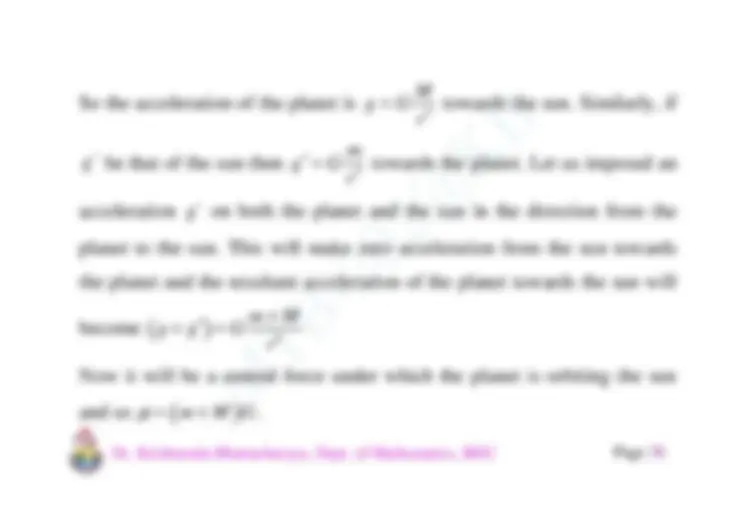

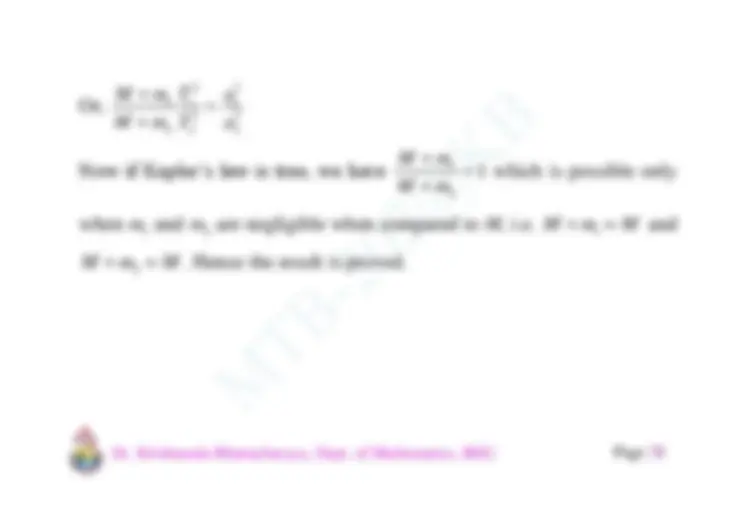
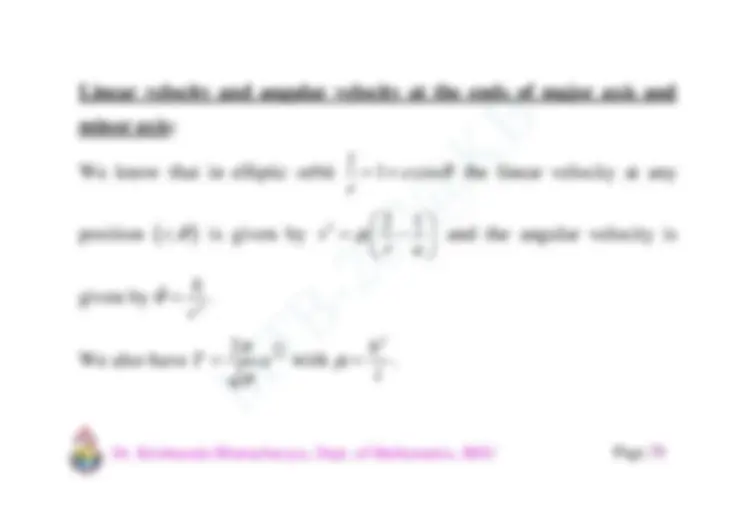
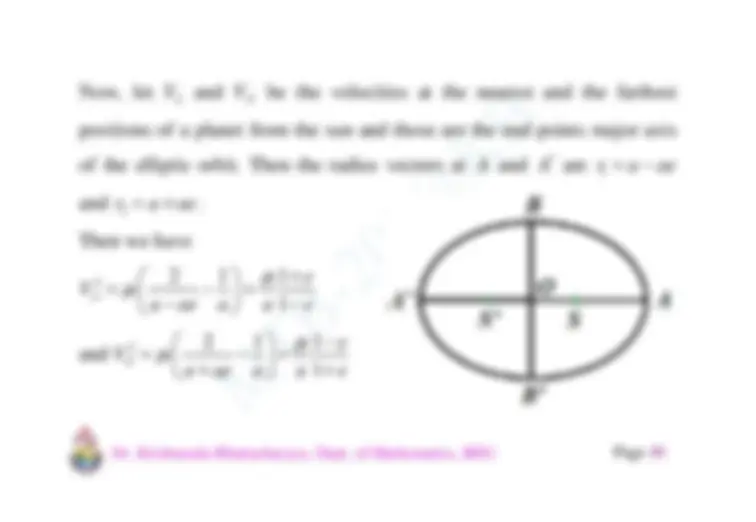
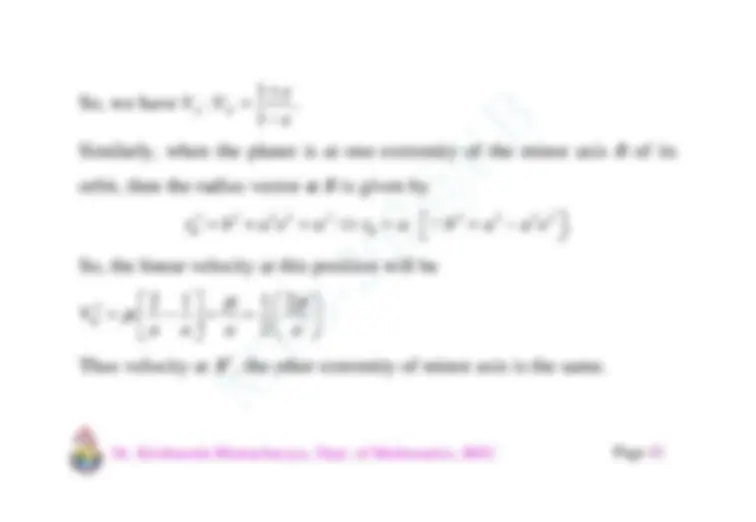
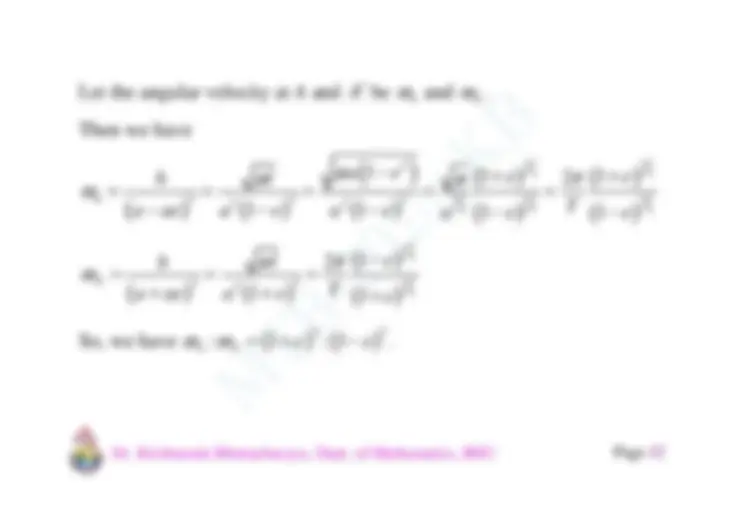
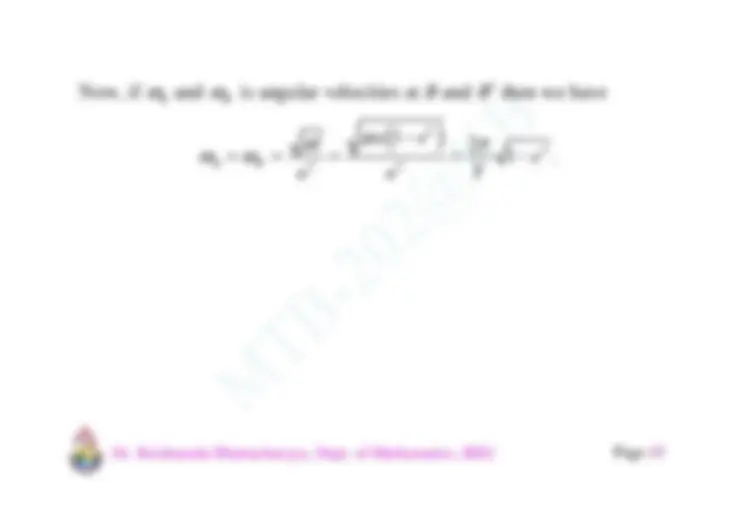


Study with the several resources on Docsity

Earn points by helping other students or get them with a premium plan


Prepare for your exams
Study with the several resources on Docsity

Earn points to download
Earn points by helping other students or get them with a premium plan
Community
Ask the community for help and clear up your study doubts
Discover the best universities in your country according to Docsity users
Free resources
Download our free guides on studying techniques, anxiety management strategies, and thesis advice from Docsity tutors
Basics regarding the keplers law, its uses in a very easy to understand manner
Typology: Lecture notes
1 / 44

This page cannot be seen from the preview
Don't miss anything!





































nd
MTB 202 – Statics and Dynamics
by
Department of Mathematics,
Institute of Science, Banaras Hindu University
Part – V
Equation of Motion (for a Central Orbit):
Let O be the centre of force. Let OX be a fixed line through O. Let P be
the position of the particle at any time t. With O as pole and OX as initial
line let (^) r ,^ be the coordinates of P.
Let F be the central force per unit mass
acting along the line PO.
There is no force acting along the cross
radial direction. Hence the equation of
motion of the particle along radial and transverse directions are
2 2
2
d r d m r mF dt dt
, i.e.,
2 2
2
d r d r F dt dt
, (1)
d d m r r dt dt
, i.e.,
2 0
d d r dt dt
where m is the mass of the particle.
Integrating (2) we have
2 constant
d r h dt
(say) (3)
2 2 2 2 2 2 5 2
d r dr h r h r h r F d d
Let
u r
, i.e.,
r u
Then from (3) we get
2
Now 2
dr d d 1 d 1 du d r d dt d u dt u d dt
2 2
1 du du hu h
d du d du d r h h dt d d d dt
2 2 2 2 2 2 2
d u d u h hu h u
Then from (1) we get
2 2 2 2 4 2
d u 1 h u h u F
2 2 2 2 3 2
d u h u h u F
2 2 2 2
d u F u u
, Or,
2
2 2 2
d u F u d h u
This equation of motion of central orbit is used in practical purpose.
We know
r u
then 2
dr 1 du
d u d
Then we have
2 2 2
1 du u
Now, differentiating both sides with respect to we get
2
3 2
dp dr du du d u u
2
3 2 2
dp du du d u u p dr u d d d
2 2 3 2
1 dp d u u u
3 2
1 dp F
p dr h
2
3
h dp F p dr
Linear velocity at a position:
We know that the angular velocity of a particle is given by 2
vp
r
2 2
h vp h 1 v v r r p p
. We also have
2 2 2 2 du v h u
in time t. As t 0, 0 and r 0 and arc PQ chord PQ.
Then the rate of description of the sectorial area
0
area of the sector OPQ lim t (^) t
area of the triangle OPQ lim t (^) t
0
sin 2 lim t
r r r
t
0
1 sin lim t 2
r r r t
0 0 0
1 sin lim lim lim 2 t^ t
r r r t
d r r r h dt
The rate of describing the sectorial area by the radius vector to the particle
moving under a centre force is called areal velocity.
Therefore, h 2 rate of describing the sectorial area
2 areal velocity
Angular momentum of the particle is the moment of momentum of the
particle about the pole (or origin).
Therefore, angular momentum = moment of momentum
2
Thus, h Angular momentum per unit mass
(II) Law of velocity is given
Suppose
2 2 6 3
1 du v u u r d
Differentiate w.r.t.
2 5 2
d u u u d
5 5 2 7
u F u F u r
Also,
3 3 p r p ar.
(III) Pedal Equation is given
Suppose
2 3 3 3 a p r p r v u and so on.
Polar Equation of the central orbit is given:
1) Elliptic Orbit:
Let the central orbit be an ellipse whose equation is
1 cos
l e r
where
2 b l a
is the semi-latus rectum, a is the semi-major axis, b is the
2 2 2
2 2 1 2 , 1
b e e a
is
eccentricity.
We have
2 2 2 2 du v h u
2 2 2 1 e^ cos^ e sin v l l l
2 2 2 2 2
1 2 cos cos sin
l e e e l
^
2 1 2 cos e e l
2
1 2 cos (^1 )
b e l a
2
2
2 1 e cos b
l a l
r a
v r
and the linear velocity varies inversely to square root of radius
vector of that position.
We have
2 2 2
h v p r a
2
l 2 1
p r a